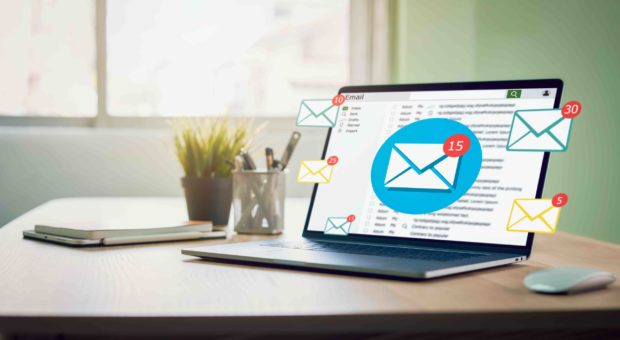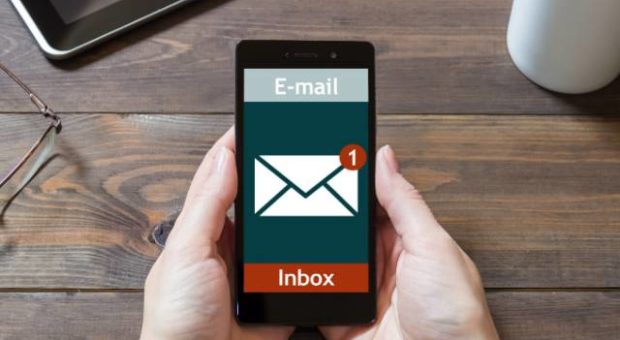
Marketers everywhere are taking notice of the need to machine their lead funnels to crank out more sales-ready customers. B2B and B2C companies are taking cues from ecommerce companies, which have really led the way in utilizing email lead nurturing strategies for some time, to develop a process of their own.
No matter how or to whom you sell, email lead nurturing is likely for you. We break down the 3 key lead nurturing strategies below, but before we do – let’s go back to basics and talk about what a lead nurturing strategy is and the key terminology.
What is Lead Nurturing?
Simply put, lead nurturing is the strategy of taking an individual lead and moving them closer towards a purchase or other type of conversion. Obviously lead nurturing is more complicated than that, otherwise you wouldn’t be here, but when you understand that basic concept, everything that follows begins to make more sense.
Lead nurturing is commonly used synonymously with a form of email marketing call “drip campaigns.” This is not necessarily wrong, as today most people think of email when they think of lead nurturing. As the customer journey continues to grow in complexity, with touchpoints spanning online and offline, your lead nurturing strategy should also broaden to other channels than just email in order to reach your consumers more effectively. The concept of lead nurturing can also be applied to things such as your paid remarketing strategy or site personalization strategy.
For our purposes, we are going to focus today’s topic on email-based lead nurturing as it is still the most common and effective way of driving a lead down the funnel.
The Importance of a Phased Approach
Another thing to note on lead nurturing is it’s a phased approach. In contrast, take an email drip campaign for example – you might setup a series of 5 emails, each with differing key messages that you send to a brand-new lead. Every lead that is generated will receive all 5 emails – regardless of whether they have taken the next desired action.
With lead nurturing, you are building your automation to reduce friction, decrease drop-off or drive that lead to take the next action. A lead nurturing strategy breaks down the touchpoints a lead goes through and organizes these points into sequential starts and finishes that link together.
Take a simple and relatable example of signing up for a blog newsletter on a new clothing site. When that business reaches out to you 2 days later offering a 10% coupon, they are striving to nurture you from a passive subscriber to a customer. Once you have become a customer, the communications of their automation likely shifts to a repurchase strategy indicating you entered the next phase of their automation.
What are some key email lead nurturing terminologies?
Like anything in digital marketing, there are a lot of terms and acronyms that you need to learn in order to develop and measure a lead nurturing campaign effectively. Lead nurturing has its own language to describe the strategy and implementation of its automation whether it’s drip emails, SMS, internal notifications, and so on.
Below are the 6 most important terms and components to consider when developing a lead nurturing strategy:
Trigger
The trigger is the enrollment criteria a contact must meet in order to enter the automation and be eligible to receive the specified emails and/or have other actions occur. This contains an action or criteria a contact must meet and, as soon as they do, it will ‘trigger’ their entrance into the automation to begin executing the actions that follow.
Actions
These are the activities that occur during the automation, such as delays, email sends, internal notifications, branching logic, etc.
- Branching – This is “if/then” or “yes/no” logic within the actions of an automation where you can send contacts down separate paths based on filters, engagements, or lack of engagement. This gives you the ability to further tailor the actions and messages to that audience.
- Dynamic Content – This is rules-based logic within an email action that can change out the contents of an email based on the contact receiving it meeting the rule criteria. The content could be the subject line, images, text, or calls-to-actions.
Suppression
This is a way of further segmenting your automation audience by removing contacts from your automation either by stopping them from enrolling into it at the start, or by removing them while they are active in the automation. This is typically a negative criterion, such as a change in status, no longer meeting the initial trigger, a way to prioritize other communications/actions a contact might be eligible for, or an indication that the lead has taken a different path.
Goal
The goal is the objective of the automation that you are ultimately driving the contact to accomplish or meet, such as a conversion (form completion) or engagement (viewing a specific page). If a contact meets the goal, they are removed from the automation and ultimately will not receive any remaining actions from the automation. If the contact does not meet the goal, they will remain in the automation until they do, or the actions end. In some marketing automation systems, there is a goal conversion rate of your automation for reporting purposes.
Now that you know the lingo, it’s time to get to mapping! When you’re starting out with developing your lead nurturing strategy, we recommend you start in a simple, text document form by defining the trigger(s), actions, suppression and goal. From there, move onto mapping it out visually using a flowchart method (Google Draw or LucidCharts is our fave) to further visualize the entire journey.
Email Lead Nurturing Strategies
Your email lead nurturing strategy should contain drips that are both proactive and reactive. Proactive emails are meant to anticipate the next intended action or need, and to get in front of the individual to stay top of mind to ultimately drive the action downstream. Reactive emails are meant to play off of an engagement the customer took, or didn’t take, that is causing you to reach out.
In email marketing it is critical you strike a balance between both in order to build a relationship with the customer. If every email you send is reactive, then your emails can feel creepy (and people don’t like feeling like their information is being misused) or be too late to make a difference.
Below are the key email lead nurturing strategies every B2C, ecommerce and B2B business needs to employ to effectively manage their lead funnel.
B2C Lead Nurturing Automations
1. New Subscriber
A welcome series of emails setting expectations on the type of content they will receive moving forward allows you to introduce the lead to the brand and begin building a lasting relationship. If you are targeting a LOHAS consumer for example, this audience cares most about purchasing from a brand that they trust. This drip campaign can help you build a strong impression by including a video about the values and impact your company has.
2. Feedback
Requesting feedback through a customer satisfaction (CSAT) or Net Promoter Score (NPS) survey can help to inform necessary internal product or service changes internally to improve the overall customer experience. Measuring this frequently and strategically at key points in the lifecycle can drive important cross-sell and up-sell opportunities.
Also in the realm of feedback, also don’t forget to nurture your customers to leave you an online review. For many consumer products and services, consumers put a lot of trust in what other customers say about your company before making the decision to purchase. Nurturing your happiest customers from your CSAT/NPS surveys to leave you a review can help to ensure you receive a positive rating.
3. Cross-sell/Up-sell
Once a lead has shown interest in a product or service, making them aware of related products can help to increase sales. Methods to do this include:
- Similar products (i.e., other options for black leather sofas)
- Complementary products such as bundled offers to complete a set (i.e., sofa and ottoman pairings)
- Higher-end products (i.e., staff favorite picks for black leather sofas) can broaden the lead’s research to find them the right fit or upsell them before they purchase.
Ecommerce Lead Nurturing Automations
1. Cart Abandonment
Abandoned cart nurturing is easily the most important lead nurturing automation for ecommerce companies. It is highly effective in converting qualified audiences into first-time or repeat customers.
When you’re setting up your abandoned cart nurturing, make sure the timing of your first email ensures the contact has actually had time to abandon the cart, so it feels helpful rather than redundant. Setting the first send to a couple of hours after a contact has added something to their cart and failed to checkout tends to be best to start.
Another tip on this front – don’t immediately go for the discount! Lots of companies immediately undercut their pricing by offering a discount in the first abandoned cart email. There are many reasons why people abandon their cart (such as saving products for later when they have more time to check out, or don’t have their card on them in that moment). Instead, save the discount for email two of your abandoned cart lead nurturing to really close the deal.
2. Recommendations
Once you have landed a customer, the real work comes with striving to keep them and turn them into a long-term, loyal customer. Create the feeling of a true partnership by taking what you know about that customer and providing timely and relevant recommendations.
Based on learned behavior, you can provide highly personalized emails to your contacts such as reminders about an upcoming event or sale or suggested products and services. Base this content on their browsing history and engagement with your brand so your recommendations don’t fall on deaf ears and actually feel like a virtual concierge.
3. Repurchase
For some products, the repeat purchase is more difficult and more critical than the first-time purchase. Some companies don’t even begin to make money on a customer until their 2nd, 3rd, or future purchases!
If your product is a recurring purchase, develop email campaigns synced up to the common repurchase timeframe after a contact first becomes a customer. To do this, the time between the first purchase and the next is critical. Build a relationship with the contact by sending them helpful content such as how to effectively use the product to ensure they have the best experience possible.
B2B Automations
1. Content Nurturing
Break up the customer journey into content topics or persona-based journeys to organize your messaging strategy. From there, build automation drips based on the phases of intent of your prospect.
An example of this could be a nurturing track for prospective customers for a marketing automation platform. When they download a comparison guide for the top marketing automation platforms, kick off a nurturing drip towards starting a trial on your platform. You can (and should!) create email nurturing tracks for each phase of the process in order to combat drop-off and accelerate your funnel velocity.
2. Onboarding
The first days, weeks or couple of months after making a purchase can be the most critical time for many B2B products and services. In this time period, companies need to quickly plan, implement and convert over to their new product or service, and doing this successfully can make or break the relationship.
Where human onboarding doesn’t make sense or to supplement your customer success strategy, developing an onboarding lead nurturing drip to provide perfectly timed useful resources, training materials, tips or reminders can provide the additional support your customers are looking for.
3. Win-back Campaign
Losing a prospect to a competitor or due to internal turnover can be disappointing – especially after you spent valuable time working on closing the deal. In some cases though, these lost leads can become valuable opportunities in the future.
If your sales team is able to categorize the reason why an opportunity is lost, a long-term lead nurturing drip can be developed to support the sales strategy. For closed lost reasons such as “went with a competitor,” your drip could contain important product comparison guides and customer testimonials to send directly to the prospect, while internal notifications are sent to the sales rep to remind them to reach out to check in on how things are going during the prospects onboarding period or close to their expected renewal date.
The Takeaway
As you can see, there are many ways to use lead nurturing emails to drive increased engagement, conversion and revenue throughout your funnel – and we are only scratching the surface. Many of the strategies above can also be applied across business types with some message tweaking and creativity on how it applies to your business!
Ready to get started on developing a lead nurturing strategy for your business? Contact us and speak to our automation specialist.
About VONT Performance Digital Marketing
At VONT we believe that change is the only constant in the digital world – and that excites us. When tools and environments are constantly changing, new opportunities to help our clients achieve success are constantly arising. Each new advertising technology, social platform, or design approach allows us to improve on the results we achieve for our clients.
We believe in this idea of continual fine-tuning so much that we named our company VONT, which means to achieve exponential improvement in incremental steps. It is our core belief, and the reason why we are not simply a web design company or simply a digital advertising agency, but rather a long-term, single source partner providing a comprehensive array of web development and digital marketing capabilities.
In short, we’re here so that our clients achieve success in the ever-changing digital world.
If you’d like to learn more about VONT and the work we’ve done with our client partners, visit our Work page. Or, if you have a question, contact us. We’ll get right back to you!

